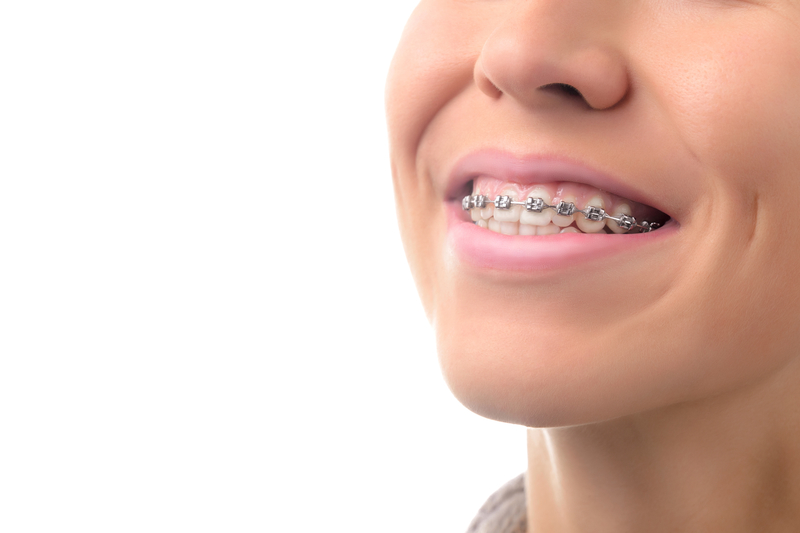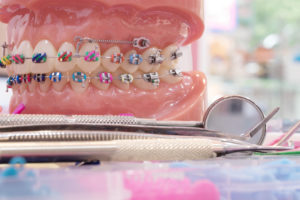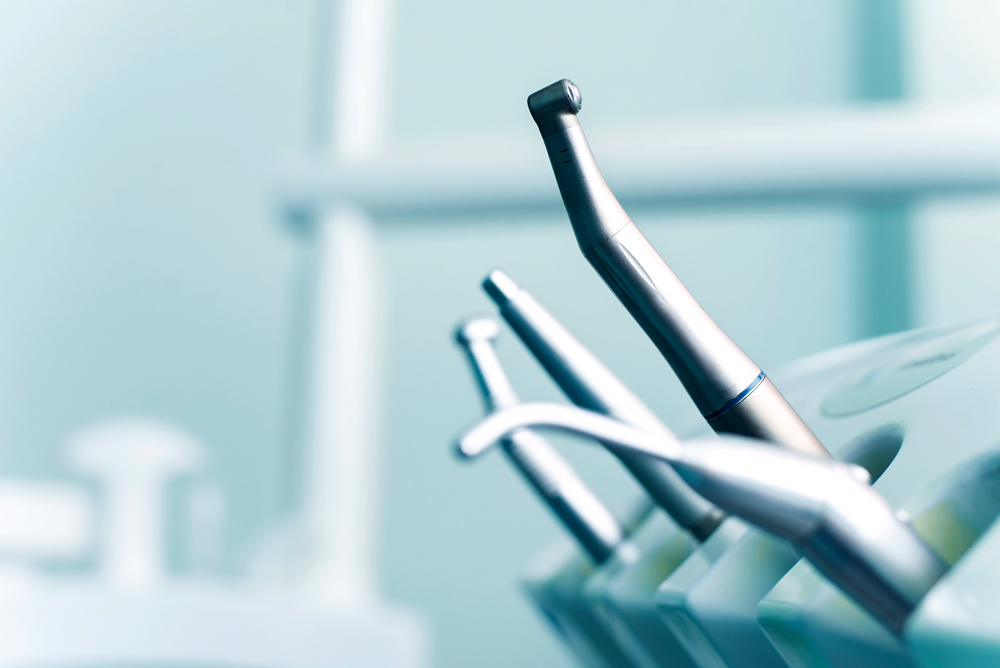Temporary Anchorage Devices: What Are They?

Whenever our teeth need an extra push to shift them into a straighter position, orthodontists will typically install a temporary anchorage device, commonly known as a “TAD.” Although they’re not used in every case, they help pull, push, and lift difficult to adjust teeth into the correct position. If your orthodontist recommends that you have a TAD, read through this guide to understand how they function and what you can do to maintain them!
Origins of Orthodontia
Poorly aligned jaws and teeth have been a nuisance to mankind since the beginning of time, so it’s no surprise that orthodontics has been around for so long. Archaeologists have found human remains with crooked teeth dating back 50,000 years; interestingly enough, the remains of some ancient civilizations, like Egypt, have been found with crude metal bands around their teeth, a form of orthodontics very similar to braces that we see nowadays. The ancient Greek, the Etruscans, and the Romans also practiced orthodontia and kept records of their discoveries. The ancient Greek physician, Hippocrates, was the first to describe teeth irregularities around 400 BC, and centuries later, Celcus would advise bringing newly emerging teeth into their proper position by pushing them with your fingers.
By the 1700 and 1800s, orthodontics was developing rapidly. Pierre Fauchard, the “Father of Dentistry,” would create the bandeau that allowed teeth to align correctly by using a strip of metal with regularly spaced holes that fit around the teeth. During the 20th century, Edward Hartley Angle would identify the true properties of a malocclusion, or misalignment, and begin addressing them with an effective set of orthodontic appliances that were developed much earlier. By the 1970s, braces would further advance through the invention of dental adhesives that would allow orthodontists to stick brackets to teeth surfaces rather than wiring them around each tooth. Stainless steel replaced gold and silver that were previously used as the wire, which helped reduce the cost of braces significantly. Even with the impressive advances that we have made since the beginning of orthodontics, patients around the world still suffer from advanced teeth and jaw malocclusion that normal braces can’t resolve on their own. For the purpose of increasing the effectiveness of braces, other orthodontic devices have been invented to facilitate this process.
Orthodontic Devices
Whenever we think of “orthodontics,” we innately assume braces. Braces have two basic parts: brackets and wires. Wires move the teeth and brackets serve as a stationary holder for the wires. Contemporary braces can be stainless steel, gold-colored, or tooth-colored ceramic. Most braces go on the front of the teeth, but there are some, called lingual braces, that are fastened onto the backs of teeth that are virtually invisible. Lingual braces are not the same as clear aligners, which is another orthodontic device. Clear aligners are made of a transparent plastic-like material and are considered “invisible braces.” They are made to fit the patient’s teeth at different stages of treatment. Each set of aligners is worn for 1-3 weeks for at least 22 hours a day, and are designed to move the teeth incrementally until the next set is used. While these types of braces are a very common sight to see in many homes, schools, and workplaces, they aren’t the only devices used to move teeth and align jaws. Power chains are sometimes used with braces for an added push. They are stronger than the traditional elastic rings and can apply an extra force when needed. The last orthodontic device that is commonly used, although many patients don’t know what their purpose is, is a temporary anchorage device, or TAD.
TADs
Temporary anchorage devices, most commonly known as TADs, are used in some orthodontic cases to help shift the teeth into a straighter position when traditional braces can’t do it on their own. For this reason, not everyone needs them. TADS use titanium mini-screws (sometimes called mini-implants or micro-implants) that provide a fixed object that can be used to push, pull, lift, or intrude teeth that are being straightened. TADS don’t move and can be placed in many different parts of the mouth, so they are highly efficient at moving difficult teeth back into proper alignment. Before TADs are ever inserted into your mouth, though, your orthodontist will evaluate your teeth and determine whether your malocclusion is severe enough to receive a TAD. Before insertion, your gum tissue and jaw area will be numbed so that the procedure will be nearly painless. The TAD is then placed into your jawbone, and will eventually be removed once your orthodontist feels that it is no longer needed for straightening your teeth.
Just like braces, it may take a couple of days for the discomfort to subside and your mouth to get used to the TAD. Try taking an over-the-counter pain relief medication to alleviate any excessive discomfort. An important part of maintaining your TAD is continuing your oral hygiene regimen. Continue to brush your teeth at least twice a day and use mouthwash with antimicrobial ingredients. As long as your gums are healthy throughout the duration of your treatment, you shouldn’t have any complications with your TAD.
Get Straighter Teeth Today
To learn more about TADS, or to schedule an appointment to begin your treatment plan for braces, call Belmar Orthodontics at (303) 225-9016! At Belmar Orthodontics, we have a highly skilled and experienced team that is happy to help you start your journey to a healthier and happier smile.
Straightening through Temporary Anchorage Devices

What are temporary anchorage devices and what can they do for you? Not all of our patients receive TADs for their teeth, but the ones that do greatly benefit from their straightening power. TADS are small titanium screws we use to help our our patients move their teeth. We place the screw in the gum and jaw bone and it acts as an anchor point for the teeth. We specialize in many methods of teeth straightening such as traditional braces, Invisalign, lingual braces and more, but also employ the use of TADs as needed to give our patients an exceptional smile. They can even aid in creating quicker tooth movement in our patients to achieve the desired straightening effect that is needed. Learn more about all of our straightening methods and which one is right for you. If you need TADs, you can trust in our expertise and finesse with giving you a straightening experience you will enjoy at Belmar Orthodontics.
The Advancement of Orthodontics
Orthodontics has come a long way from the crude methods of straightening practiced centuries ago. Extensive headgear and wires were used to straighten the teeth in the past. We benefit today from advanced technology that allows us many options when it comes to straightening the teeth, even discrete options. Temporary anchorage devices (TADs) are one of the methods we employ at Belmar Orthodontics when it’s in the best interest of the patient. Temporary anchorage devices work with braces to get your teeth straighter, faster. How do they work though?
Tidbits About Temporary Anchorage Devices
Temporary anchorage devices help shift the teeth into a straighter position when braces can’t do the job on their own. Braces are usually sufficient for most patients, but we want all of our patients to benefit from amazing, straight smiles and because of this we use TADs to get them all the way there. TADs consist of small, titanium mini-screws called “mini-implants” or “micro-implants”. These implants are fixed objects that braces use to push, pull, lift or intrude teeth while straightening. Just think of them as anchor points that are amazing tools for braces to get your teeth straighter. Once inserted, TADs do not move, but Dr. Hardy is able to use them to move the teeth in directions and distances that were not previously possible.
How Do They Work?
Temporary anchorage devices are installed quite easy, much like other orthodontic options. You have to be a good candidate for TADs to receive them. This means free of gum disease and you need a strong jaw. Your gum tissue and jaw area will be numbed much like they are numbed at a dental office before a procedure. Then Dr. Hardy will insert the tiny metal screws in areas that will help your teeth to move the most. The insertion process will be completely painless. Adjustment to TADs might take a day or two. The adjustment process should be no different than adjusting to metal braces. Adjusting to any type of straightening device takes time. We will remove the TADs once your teeth have moved into proper place. It’s literally that easy.
Traditional Straightening Options
We have many options for straightening instead of solely relying on traditional metal braces. We’ll still include metal braces on our list though:
- Traditional Braces – These are the standard metal braces that we all know and love. The great thing about “traditional” braces is that they are traditional for a reason. They are strong and highly effective with moving the teeth. Most of our patients get to dress up their brackets with a variety of colors at each visit too. This is usually the most cost-effective option when it comes to straightening the teeth.
- Ceramic Braces – These are basically your traditional metal braces, except for the fact that they can be made white to match the color of your teeth. The wires and brackets are both made white so they are virtually unnoticeable in your mouth. Ceramic braces are made of ceramic material. Ceramic is harder to stain and easier to clean than metal.
Discreet Straightening Options
Want a straight smile without others knowing? Try lingual braces or Invisalign!
- Lingual Braces – Take a step up from traditional and ceramic braces with lingual braces. These braces are called “incognito” braces because they do just that—go incognito! We customize lingual braces to the shape of your teeth. We then attach them behind the teeth instead of in front. You’ll receive all the strength and functionality of metal braces without the visibility.
- Invisalign – Invisalign is perhaps the most discreet form of teeth straightening. These transparent, removable aligners are perfect for teens and adults who want a straighter smile and don’t have bite problems. You will receive customizable aligners that change every few weeks so that the teeth are constantly falling into a straighter position. Oral care is easier, you can remove them at your leisure, and you will come out in the end with a straight smile—which is what we all want!
If you ever need to have TADs, just know that you are going to be having a powerful straightening experience that usually takes less time than it otherwise would to receive your beautiful, straight smile. We could all benefit from a little more time, right? To learn more about all your straightening options, call our Belmar Orthodontics office today at (303) 225-9016!

